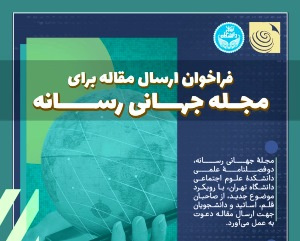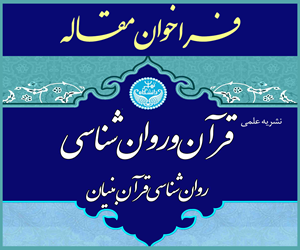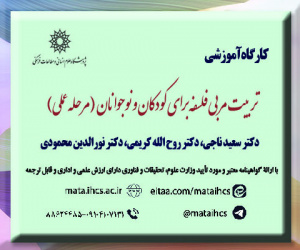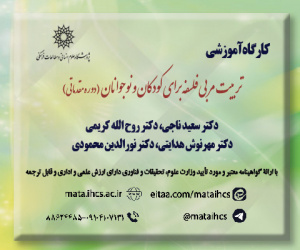آینده نگاری گسترش سکونتگاه های غیررسمی شهر خوی با رویکرد سناریونویسی (مقاله علمی وزارت علوم)
درجه علمی: نشریه علمی (وزارت علوم)
آرشیو
چکیده
مقدمه امروزه یکی از چالش های مهم پیش رو، مسئله اسکان نایافتگی و سکونتگاه های غیررسمی است. بحث اسکان غیررسمی یک چالش بشری است که پیامدهای آن هنوز هم در جهان در حال توسعه نمایان است. اسکان غیررسمی در کنار اینکه پدیده ای جغرافیایی و شهری و معماری است، به طور جدی پدیده ای اجتماعی هم تلقی می شود. اسکان غیر رسمی به طور کلی به عنوان تولید فزاینده، غیرمجاز و خود سازمان یافته محله های جدید شهری تعریف می شود. این نوع سکونتگاه ها اغلب به مکانی برای جذب مهاجران از روستا به شهر، تأمین کننده مسکن ارزان قیمت برای بیش از یک میلیارد نفر و ایجادکننده زیرساخت های اولیه محله در شهرهای در حال توسعه تبدیل شده اند. مواد و روش هامقاله پیش رو از نظر هدف، کاربردی و به لحاظ ماهیت، توصیفی و تحلیلی است. داده ها و اطلاعات مورد نیاز نیز با استفاده از روش های آینده نگاری و بهره گیری از ابزار پرسش نامه و مصاحبه با متخصصان و خبرگان تکمیل شد. جامعه آماری در این مقاله، کارشناسان، خبرگان و متخصصان مرتبط با موضوع پژوهش بوده و قلمروی مکانی پژوهش نیز شهر میانه اندام خوی است. انتخاب کارشناسان و خبرگان از حوزه های زیر صورت گرفته است: خبرگان دانشگاهی و جامعه علمی با حوزه تخصصی برنامه ریزی شهری و مسکن، مدیران و کارشناسان فعال در حوزه مدیریت شهری، مدیران و عوامل اجرایی درگیر در مسائل شهری (شهرداری و اداره راه و شهرسازی). در این پژوهش از تکنیک دلفی برای جمع آوری داده ها و از روش تحلیل ساختاری به منظور بررسی و شناسایی عوامل و متغیرهای تأثیرگذار استفاده شده است. عوامل کلیدی نیز با بهره گیری از نرم افزار میک مک شناسایی شدند و در نهایت روش سناریونگاری با بهره گیری از نرم افزار Scenario Wizard به منظور تدوین و تحلیل سناریوهای محتمل و مطلوب به کار گرفته شد. یافته هابرای شناسایی عوامل اولیه مؤثر بر روند آینده سکونتگاه های غیررسمی شهر خوی، تکنیک دلفی به کار گرفته شد. به این منظور پرسش نامه هایی به صورت تشریحی طراحی و در اختیار کارشناسان مربوطه قرار گرفت. سپس پرسش نامه های دریافتی مورد بررسی قرار گرفت که در نتیجه آن، تعداد 72 عامل در 6 حوزه (اقتصادی، اجتماعی و فرهنگی، زیست محیطی، کالبدی و فیزیکی، مدیریتی و سیاست های مدیران شهری، سیاست های کلان استانی و کشوری) مورد شناسایی قرار گرفتند. در راند بعدی تکنیک دلفی، متغیرهای مؤثر بر وضعیت آینده سکونتگاه های غیررسمی شهر خوی، وارد ماتریس اثرات متقابل شده تا شدت تأثیرگذاری و تأثیرپذیری آن ها بر همدیگر و بر وضعیت آینده گسترش سکونتگاه های غیررسمی شهر خوی مشخص شود. میزان تأثیرگذاری عوامل بر یکدیگر از صفر تا 3 مورد سنجش قرار گرفت. عدد صفر نمایانگر فقدان تأثیر عوامل بر همدیگر است، عدد 1 نمایانگر تأثیرگذاری ضعیف متغیرها بر همدیگر، عدد 2 نمایانگر تأثیرگذاری میانه عوامل بر یکدیگر و عدد 3 نمایانگر تأثیرگذاری بالای عوامل بر یکدیگر است. پس از معین شدن میزان و شدت تأثیرگذاری متغیرها، ماتریس اثرات ساختاری جهت بیان متغیرهای کلیدی وارد نرم افزار میک مک شد. ابعاد این ماتریس 72×72 بوده و درجه پر شدگی آن نیز 60 درصد است که بیان می کند متغیرها در بیش از 60 درصد روی یکدیگر تأثیرگذار بوده اند. از مجموع 5184 رابطه ممکن و محتمل در این ماتریس، 2060 نسبت عدد صفر، 1936 نسبت عدد 1، 870 نسبت عدد 2 و 310 نسبت عدد 3 است. نتیجه گیریاین مقاله با هدف بررسی وضعیت آینده سکونتگاه های غیررسمی در شهر میانه اندام خوی با رویکرد آینده نگاری انجام شده است. گسترش روزافزون حاشیه نشینی و سکونتگاه های غیررسمی در اطراف شهر خوی و سرایت مشکلات این مناطق به درون شهر خوی و لزوم ارائه عوامل تأثیرگذار در رشد و گسترش این مناطق باعث انجام این پژوهش شده است. در این تحقیق برای شناسایی عوامل اولیه مؤثر بر روند آینده رشد و گسترش سکونتگاه های غیررسمی شهر خوی از دلفی مدیران استفاده شد. در راند اول پرسش نامه هایی به صورت تشریحی و با سؤال های باز طراحی شد، در این پرسش نامه ها از کارشناسان خواسته شد تا عوامل مؤثر و دخیل در سیستم مورد مطالعه را شناسایی کنند. پس از بررسی پرسش نامه های دریافتی از کارشناسان تعداد 72 عامل در 6 حوزه (اقتصادی، اجتماعی و فرهنگی، زیست محیطی، کالبدی و فیزیکی، مدیریتی و سیاست های مدیران شهری، سیاست های کلان استانی و کشوری) استخراج شدند. در ادامه پرسش نامه دلفی، عوامل تأثیرگذار وارد ماتریس اثرات متقاطع شده تا میزان تأثیرگذاری آن ها بر یکدیگر و بر وضعیت آینده گسترش سکونتگاه های غیررسمی شهر خوی مشخص شود. اگر تعداد عوامل شناسایی شده N باشد، یک ماتریس تأثیرگذاری N× N تشکیل می شود. میزان این تأثیرگذاری از عدد صفر تا 3 مورد سنجش قرار می گیرد. از مجموع 72 عامل اولیه تأثیر گذار بر آینده سیستم، 26 عامل به عنوان عوامل کلیدی انتخاب شدند. در ادامه برای سناریو نگاری، تعداد 78 وضعیت پیش رو برای این عوامل کلیدی طراحی شد. این وضعیت های محتمل برای روند آینده پیش روی سیستم از نظر سیاست گذاری بسیار بااهمیت هستند. می توان اذعان کرد که لازمه تدوین سناریوها، تحلیل شرایط پیش روی سیستم است. روندهای احتمالی برای هر عامل از سایر متغیرها متفاوت است و تنها خاصیت اشتراکی بین آن ها وجود طیفی از روندهای مطلوب، بینابین و نامطلوب است. از مجموع 678 وضعیت حاکم بر روند آینده گسترش سکونتگاه های غیررسمی شهر خوی، تعداد 275 وضعیت روندی مطلوب، تعداد 267 وضعیت روندی ایستا و تعداد 136 وضعیت روندی نامطلوب را برای آینده سیستم متبادر هستند. در مقاله حاضر سناریوهای منتخب به دو دسته کلی تقسیم بندی شدند:سناریوهای منتخب با توجه به درجه مطلوبیت آن ها در دو گروه دسته بندی می شوند: سناریوهای کاملاً مطلوب (سناریوهای اول تا نهم) و سناریوهای با وضعیت بینابین و نامطلوب (سناریوهای دهم تا بیست و ششم).Forecasting the Expansion of Informal Settlements in Shahr Khoi with a Scenario Writing Approach
Introduction Today, one of the most important challenges facing us is the issue of housing and informal settlements. The issue of informal settlement is a human challenge whose consequences are still visible in the developing world. Besides being a geographical, urban, and architectural phenomenon, informal settlements are also seriously considered a social phenomenon. Informal settlement is generally defined as the increasing, unauthorized, and self-organized production of new urban neighborhoods. These settlements have often become a place to attract migrants from the countryside to the city, provide cheap housing for more than a billion people, and create the basic infrastructure of neighborhoods in growing cities.
Materials and MethodsThe following article is practical in terms of purpose and descriptive and analytical in nature. The required data and information were also completed using forecasting methods and the use of questionnaire tools and interviews with specialists and experts. The statistical population in this article is the experts, specialists, and experts related to the research topic and the geographical area of the research is the middle city of Andam Khoi. Experts have been selected from the following fields: academic and scientific community experts with the specialized field of urban planning and housing, managers and experts active in the field of urban management, managers and executive agents involved in urban issues (municipality and road and urban development department) ). In this research, the Delphi technique was used to collect data, and the structural analysis method was used to investigate and identify influencing factors and variables. The key factors were also identified using Mic Mac software, and finally, the scenario planning method was used using Scenario Wizard software to compile and analyze probable and desirable scenarios.
FindingsThe Delphi technique was used to identify the primary factors affecting the future trend of informal settlements in Khoy city. For this purpose, descriptive questionnaires were designed and provided to the relevant experts, then the received questionnaires were examined, and as a result, 72 factors were identified in 6 areas (economic, social and cultural, environmental, physical and physical, management and policies of city managers, macro-provincial and national policies) were identified. In the next round of the Delphi technique, the variables affecting the future status of the informal settlements in Khoy City were entered into the matrix of mutual effects to determine the intensity of their influence on each other and the future status of the expansion of informal settlements in Khoy City. The influence of factors on each other was measured from zero to three. The number zero represents the lack of influence of the factors on each other, the number one represents the weak influence of the variables on each other, the number two represents the medium influence of the factors on each other, and the number three represents the high influence of the factors on each other. After determining the amount and intensity of the influence of the variables, the matrix of structural effects was entered into the MikMak software to express the key variables. The dimensions of this matrix are 72 x 72 and its degree of filling is 60%, which means that the variables have influenced each other more than 60%. Out of the total of 5184 possible and probable relationships in this matrix, 2060 are zero ratios, 1936 are one ratio, 870 are two ratios, and 310 are three ratios.
ConclusionThis article aims to investigate the future status of informal settlements in the middle city of Andam Khoi with a foresight approach. The ever-increasing expansion of marginalization and informal settlements around the city of Khoy the contagion of the problems of these areas into the city of Khoy and the need to provide factors influencing the growth and expansion of these areas have led to this research. In this research, managers’ Delphi was used to identify the primary factors affecting the future growth and expansion of informal settlements in Shahr Khoi. In the first round, descriptive questionnaires were designed with open questions, in these questionnaires, experts were asked to identify the effective and involved factors in the studied system, after reviewing the questionnaires received from the experts, there were 72 factors in 6 areas (economic, social and cultural, environmental, bodily and physical, managerial and policies of city managers, provincial and national policies) were extracted. In the continuation of the Delphi questionnaire, the influential factors were entered into the cross-effects matrix to determine the extent of their influence on each other and the future state of expansion of informal settlements in Shahr Khoi. If the number of identified factors is N, an N×N influence matrix is formed. The degree of this influence is measured from zero to three. Out of a total of 72 primary factors affecting the future of the system, 26 factors were selected as key factors. Next, for scenario writing, 78 future situations were designed for these key factors. These possible situations are very important for the future course of the system in terms of policy. It can be acknowledged that the necessity of developing scenarios is to analyze the system’s conditions. Possible trends for each factor are different from other variables and the only common property between them is a range of favorable, intermediate, and unfavorable trends. Out of a total of 678 conditions governing the future development of informal settlements in Khoy City, 275 are favorable, 267 are static, and 136 are unfavorable for the future of the system. In this article, the selected scenarios were divided into two general categories:The selected scenarios are classified into two groups according to their desirability: perfectly favorable scenarios (first, second, third, fourth, fifth, sixth, seventh, eighth, ninth scenarios), and scenarios with an intermediate and unfavorable situation (scenarios 10th, 11th, 12th, 13th, 14th, 15th, 16th, 17th, 18th, 19th, 20th, 21st, 22nd, 23rd, 24th, 25th, twenty sixth).



